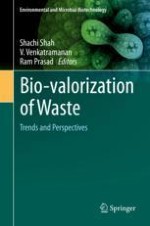2021 | OriginalPaper | Buchkapitel
13. Microbial Degradation of Lignocellulosic Biomass to Obtain High Value-Added Products
verfasst von : J. A. Cecilia, C. P. Jiménez-Gómez, C. García-Sancho, P. Maireles-Torres
Erschienen in: Bio-valorization of Waste
Verlag: Springer Singapore
Aktivieren Sie unsere intelligente Suche, um passende Fachinhalte oder Patente zu finden.
Wählen Sie Textabschnitte aus um mit Künstlicher Intelligenz passenden Patente zu finden. powered by
Markieren Sie Textabschnitte, um KI-gestützt weitere passende Inhalte zu finden. powered by
